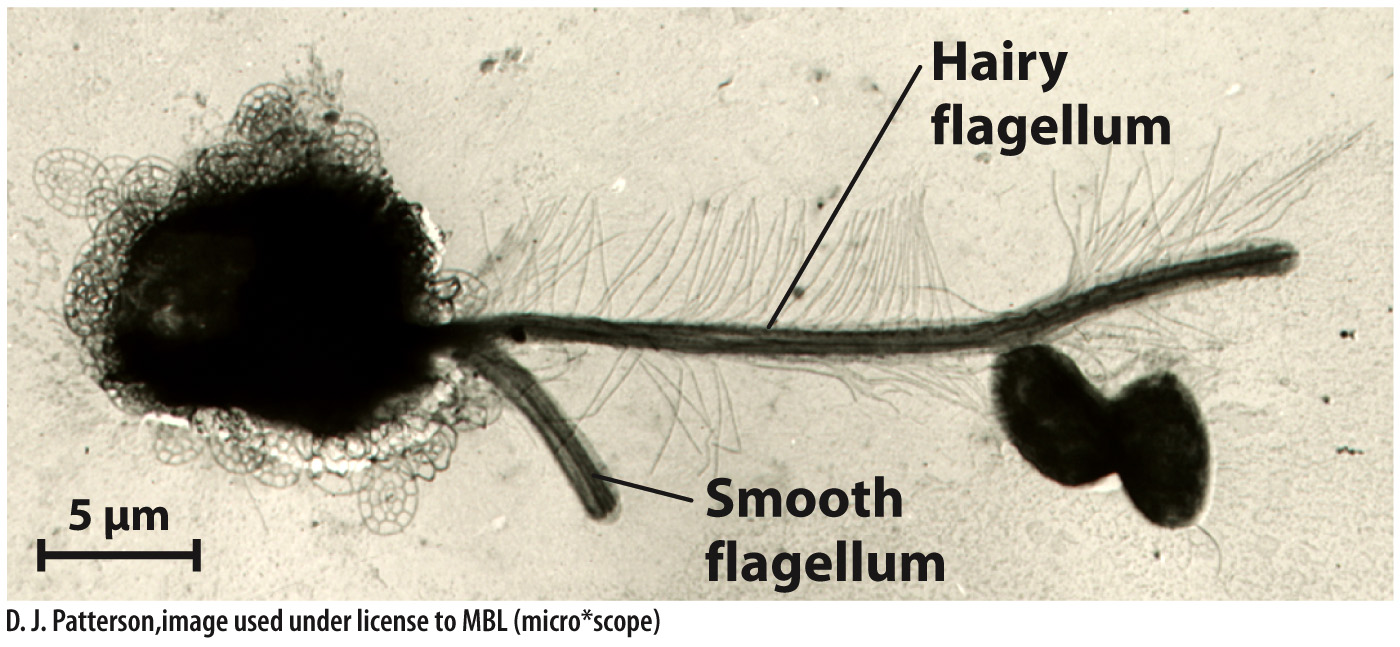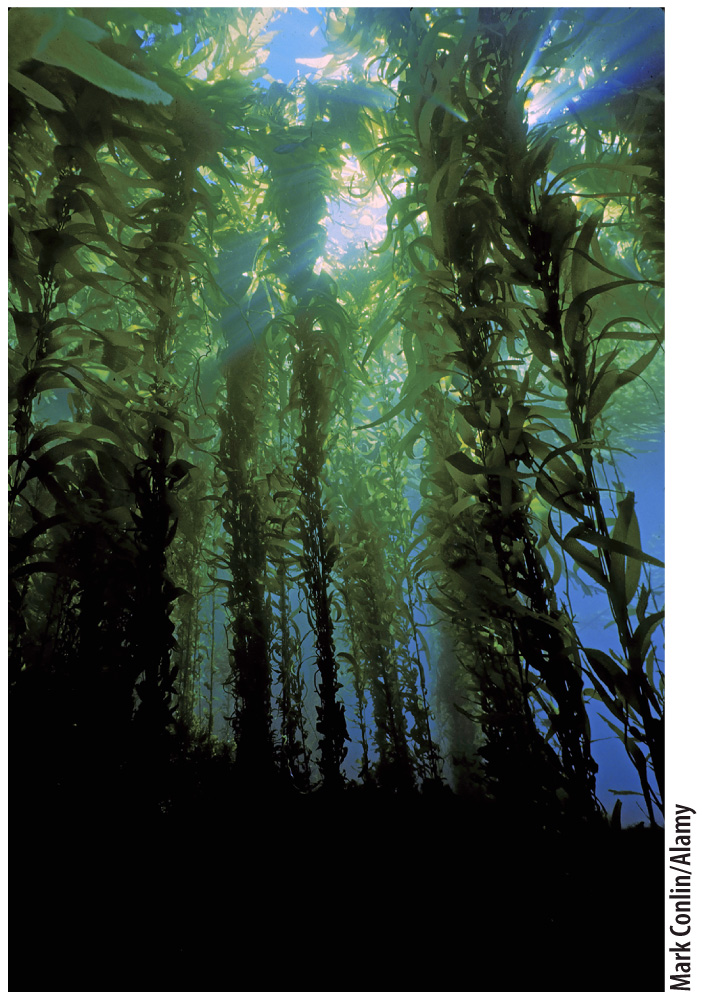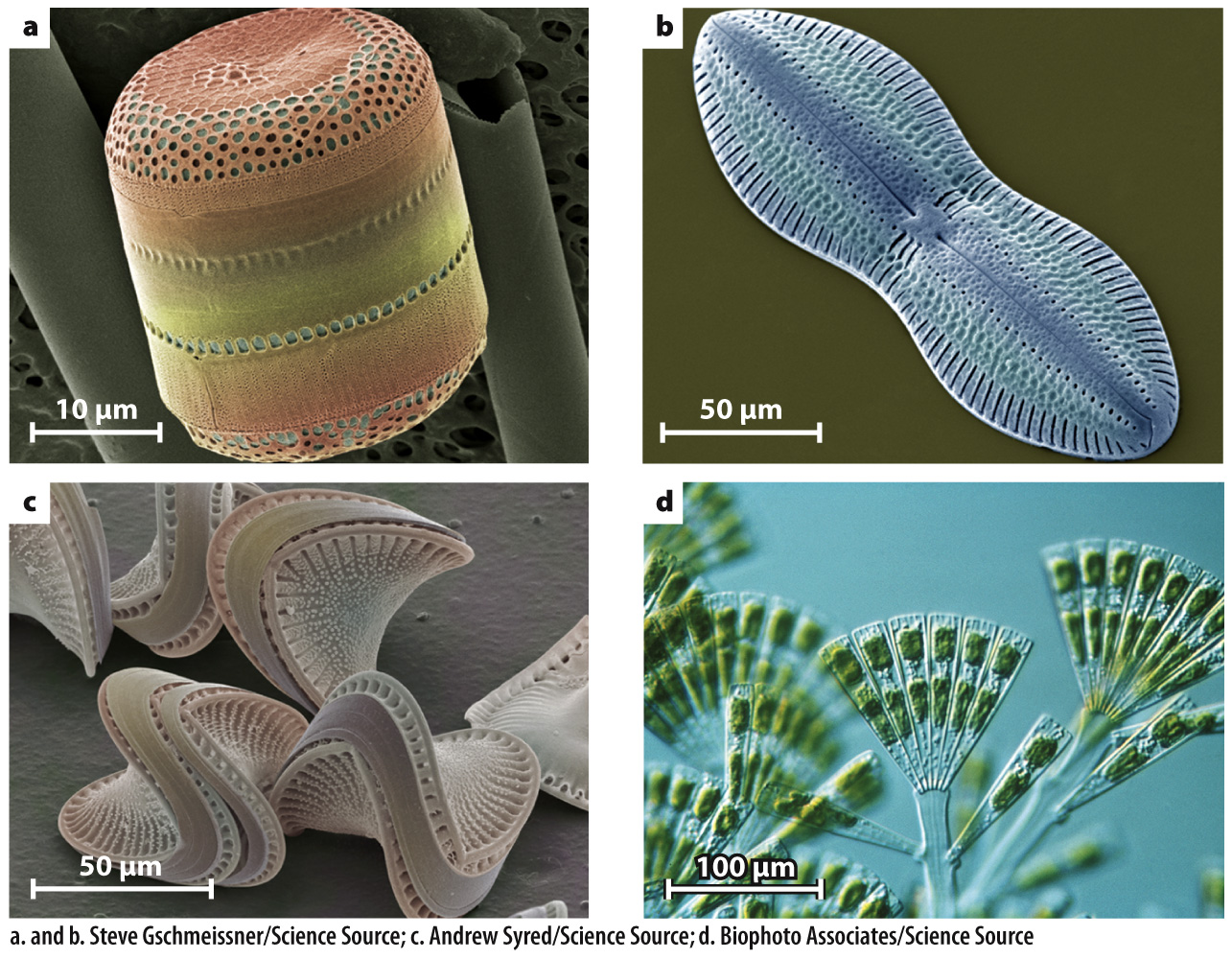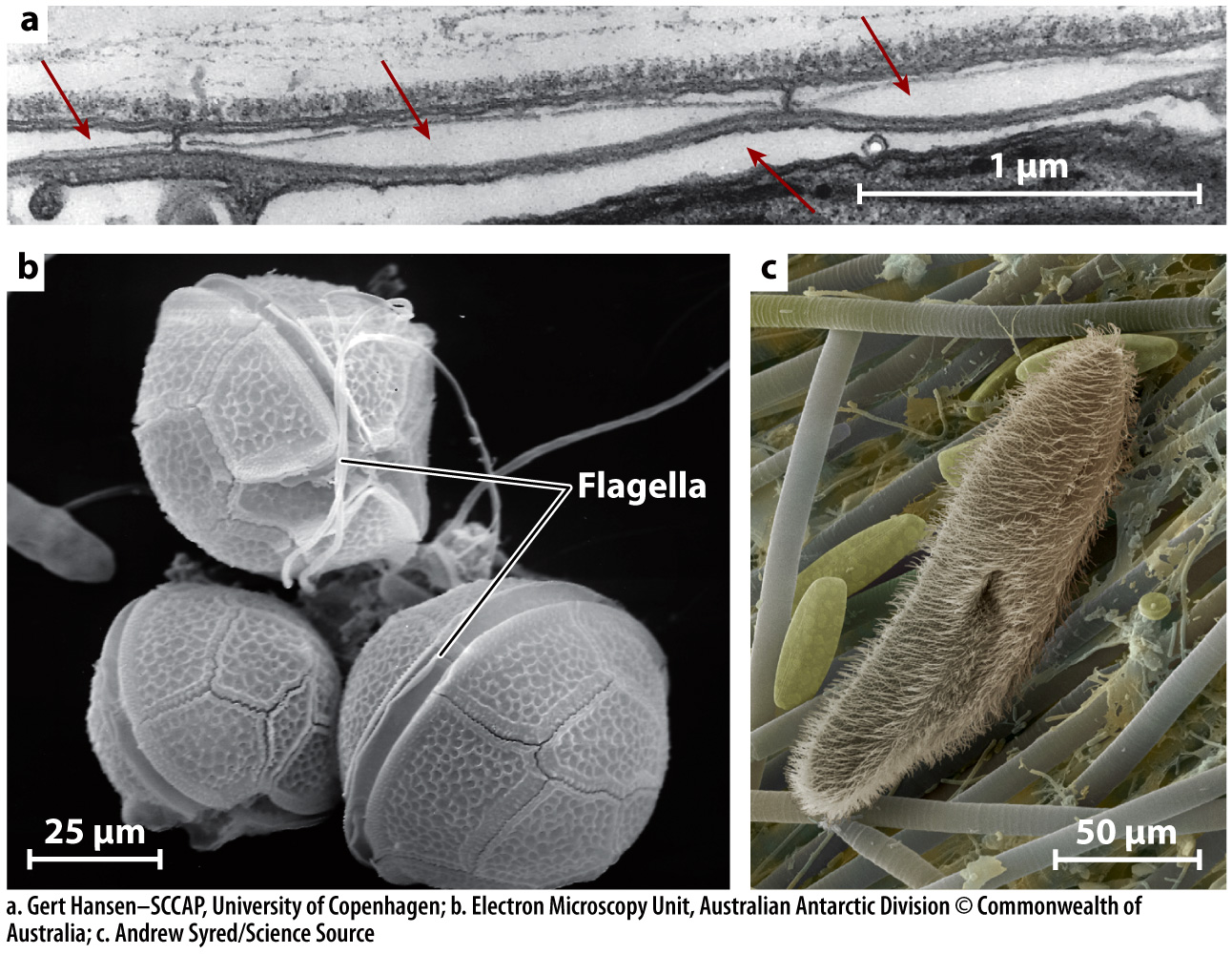Stramenopiles, alveolates, and rhizarians dominate eukaryotic diversity in the oceans.
The phylogenetically related superkingdoms called the stramenopiles, alveolates, and rhizarians may not be household names, but perhaps they should be. The surface ocean hosts three species belonging to these groups for every marine animal species, and these protists also play important roles in the ecology of lakes, rivers, and soils.
The superkingdom Stramenopila (see Fig. 27.9) includes unicellular organisms and giant kelps, algae and protozoa, free-

Despite the presence of heterotrophic species, most stramenopiles are photosynthetic. There are about a dozen groups of stramenopile algae, of which the brown algae and diatoms deserve special mention. Brown seaweeds are common along rocky shorelines across the world, and in the Sargasso Sea, huge masses of ropy brown algae (aptly named Sargassum) float at the surface. Easily the most impressive brown algae are the kelps, giant seaweeds that form forests above the seafloor (Fig. 27.17). Kelps not only develop functionally distinct tissues, but also have evolved distinct organs specialized for attachment, photosynthesis, flotation, and reproduction.

569
The most diverse stramenopiles, however, are the diatoms (Fig. 27.18). Recognized by their distinctive skeletons of silica, diatoms account for half of all photosynthesis in the sea (and, so, nearly a quarter of all photosynthesis on Earth). The 10,000 known diatom species thrive in environments that range from wet soil to the open ocean.

Among heterotrophic stramenopiles, the oomycetes, or water molds, are particularly interesting. Originally classified as fungi, these multicellular pathogens cause a number of plant diseases, including the potato blight that devastated Ireland during the 1840s (Chapter 33). Other species infect animals, including humans.
570
Like stramenopiles, the superkingdom Alveolata is a diverse group that includes both photosynthetic and heterotrophic species. And, again, like stramenopiles and many other eukaryotic groups, alveolates are united by a feature observed only with careful electron microscopy—

Most photosynthetic alveolates belong to a large subgroup called dinoflagellates. Dinoflagellates are distinguished by two flagella that produce a rotary motion of the cell as it moves through its environment; many also have a distinctive covering of organic plates (Fig. 27.19b). About 4000 dinoflagellate species have been described, but recent genomic surveys of the oceans make it clear that they are much more diverse—
The alveolates also include a second diverse (8000 described species) group of protists called ciliates (Fig. 27.19c). Ciliates are also distinct at the cellular level, with two nuclei in each cell and numerous short flagella called cilia. They are heterotrophs that feed on bacteria or other protists. In ecological terms, ciliates are among Earth’s most important heterotrophic protists.
Dinoflagellates and ciliates are both diverse and ecologically important, but it may be the third principal group of alveolates, the Apicomplexans, that attracts most scientific attention. The reason is simple: The apicomplexan Plasmodium falciparum and related species cause malaria, a lethal disease that sickened millions and killed nearly 600,000 people in 2013 (Case 4: Malaria). Although Plasmodium cells are heterotrophic, they contain vestigial chloroplasts that suggest evolutionary loss of photosynthesis. Recently, this hypothesis has been confirmed by the discovery in Sydney Harbour, Australia, of photosynthetic cells closely related to parasitic Plasmodium.